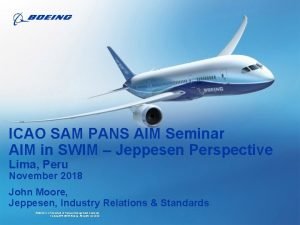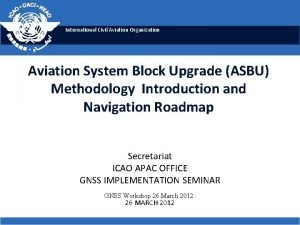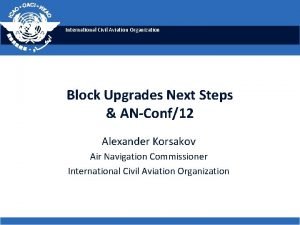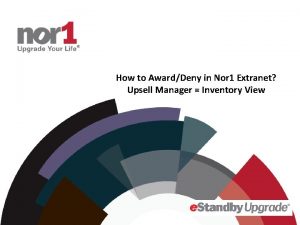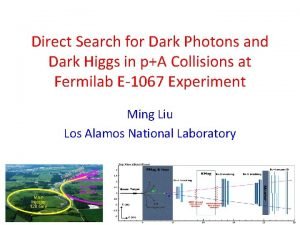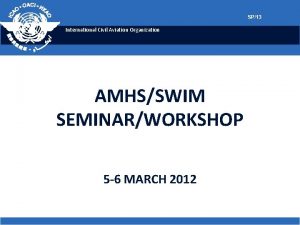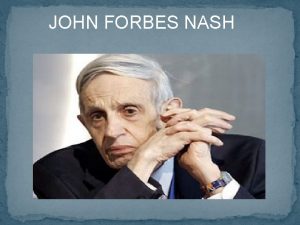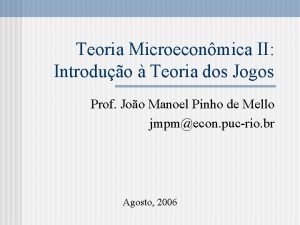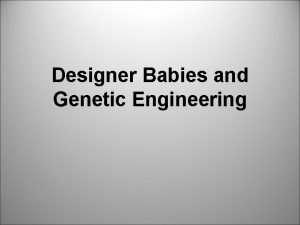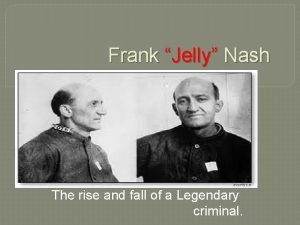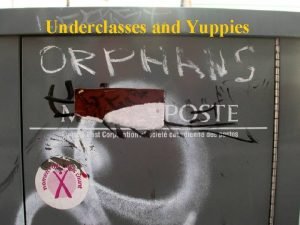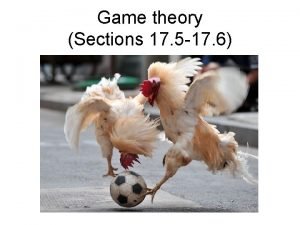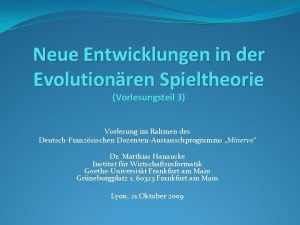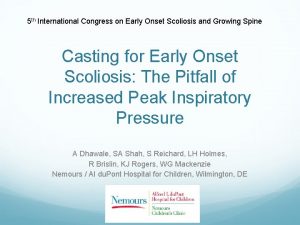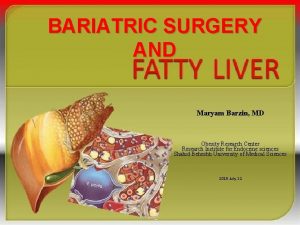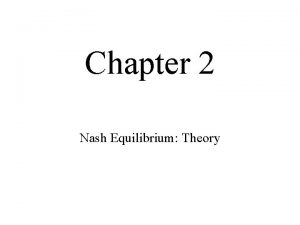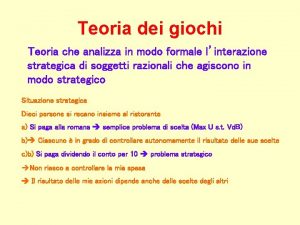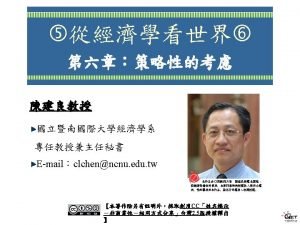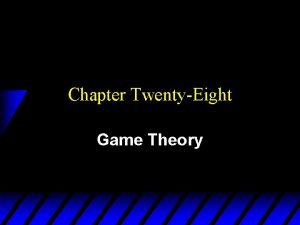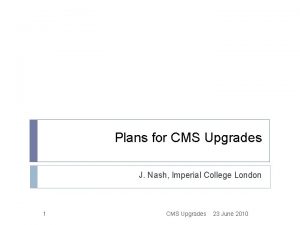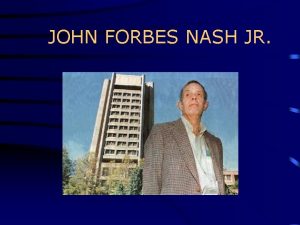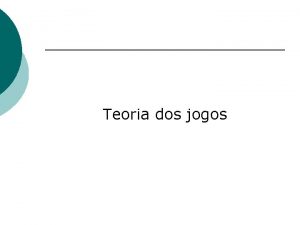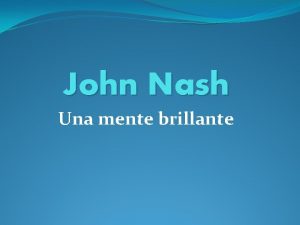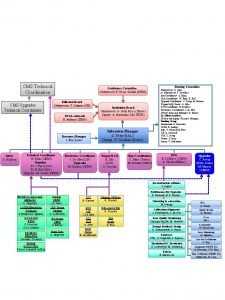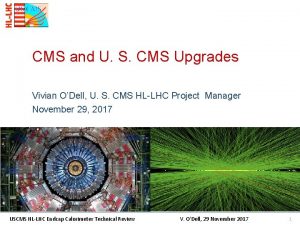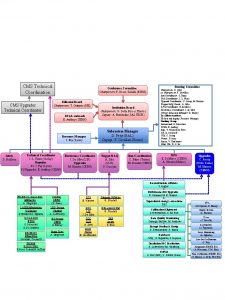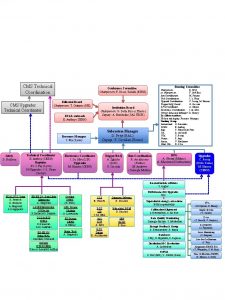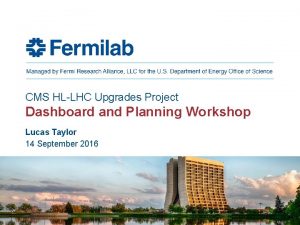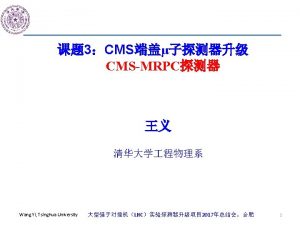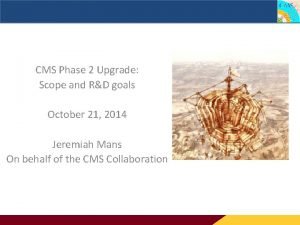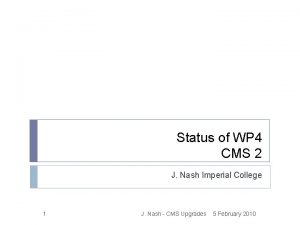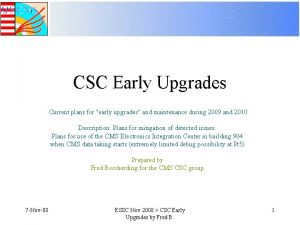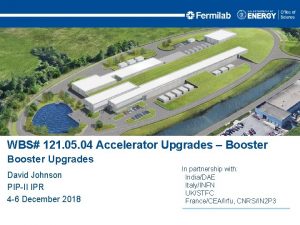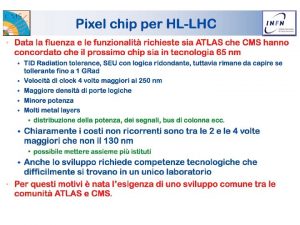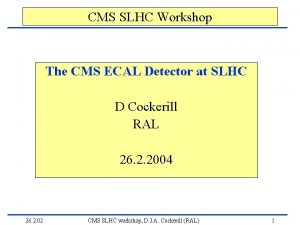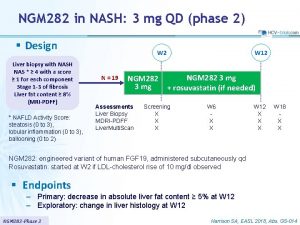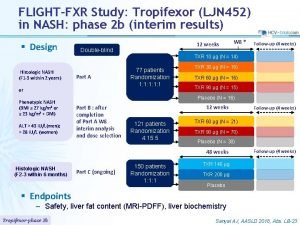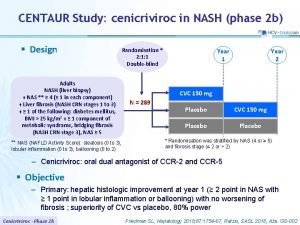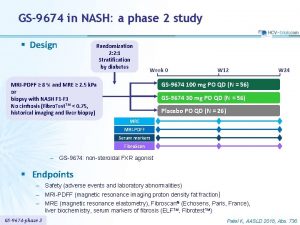Phase 2 Upgrades J Nash CMS Upgrades Workshop





































- Slides: 37

Phase 2 Upgrades J. Nash CMS Upgrades Workshop FNAL October 2009 1 J. Nash - CMS Upgrades 29 October 2009 FNAL

What are the phase 2 upgrades? This are the large scale changes to CMS required to handle significantly higher peak and integrated luminosity Peak luminosity potentially up to 10 35 Integrated luminosity 3000 -5000/fb There will need to be a substantial shutdown 2 Long enough to replace the central trackers of ATLAS/CMS J. Nash - CMS Upgrades 29 October 2009 FNAL

When is the phase 2 upgrade? A number of large scale projects at CERN which will need to be approved and built in order for this to go forward 3 Increasing the brightness of the beam requires replacement of a lot of the injector chain to the LHC There is a lot of Machine R/D to perform J. Nash - CMS Upgrades 29 October 2009 FNAL

Peak Luminosity Nb nb fr n * F number of particles per bunch number of bunches revolution frequency normalised emittance beta value at Ip reduction factor due to crossing angle Nb , n injector chain * LHC insertion F beam separation schemes nb electron cloud effect

The upgrade of the LHC Injectors Motivations: progressively increase the LHC luminosity, increase reliability, simplify operation, reduce radiation, open to new physics applications. Phase 1: Approved 06/2007, started 2008 Phase 2: Design approved 06/2007 (LP)SPL: (Low Power) Superconducting Proton Linac (4 -5 Ge. V) PS 2: High Energy PS (~ 5 to 50 Ge. V – 0. 3 Hz) SPS+: Superconducting SPS (50 to 1000 Ge. V) SLHC: “Superluminosity” LHC (up to 1035 cm-2 s-1) DLHC: “Double energy” LHC (1 to ~14 Te. V) 5

Linac 4 Groundbreaking – 16. 10. 2008 6

PS 2 integration 7 PS 2 Status, M. Benedikt 8/12/2008

SPL Increase the injection energy into the PS 2 Ultimately could be extended to provide high power source 8 Neutrinos ISOLDE upgrade J. Nash - CMS Upgrades 13 May 2009

Planning … 3 Me. V test place ready Linac 4 approval CDR 2 SPL & PS 2 approval Start for Physics

Agreed Scenario for Peak luminosity (CMS/ATLAS/Machine/LHCC) With the news over the summer of the splices needing to be repaired, it is likely that an energy upgrade (to 14 Te. V) will be the priority – and will happen near the timescales of our “Phase I” upgrade New injectors + IR upgrade phase 2 Early operation 10 Collimation phase 2 Linac 4 + IR upgrade phase 1 We will need to revisit the likely timescales for Phase II once the machine really starts runnng. J. Nash - CMS Upgrades 29 October 2009 FNAL

Why do we want to upgrade? The physics needs to motivate the upgrade 11 J. Nash - CMS Upgrades 29 October 2009 FNAL

SLHC is about the maximizing the output of LHC physics We should be led by getting the best physics out of any upgraded machine/detector Not by the highest peak luminosity Even maximum integrated luminosity may not be the most important metric Issues 12 Integrated luminosity Backgrounds Acceptance Pile-up J. Nash - SLHC 20 October 2009

Some Physics themes Different physics channels require different conditions Three main directions for Phase II Damn the torpedos - FULL Luminosity Maximum of quality luminosity Luminosity leveling? Forward acceptance We won’t know which is the most important until we have first data from the LHC 13 Important not to eliminate a physics opportunity until we are sure it makes sense to do so We have to be ready to build detectors for any of these scenarios J. Nash - SLHC 20 October 2009

SLHC Physics: Extra gauge bosons SLHC extends reach for Z’ 14 Cross sections fall with E SLHC gives access to higher E Just give us the Integrated Luminosity! Good electron resolution required (including understanding saturation) J. Nash - SLHC 20 October 2009

SUSY searches - measurements Here we need a lot of Integrated Luminosity, but needs to be high quality. Lower pile-up may be important. SLHC statistics will be vital in reaching understanding of complicated SUSY channels Sparticles seen, but statistics for reconstruction limited at LHC Performance of the detector here is vital 15 B-tagging Lepton id J. Nash - SLHC 20 October 2009

What if no Higgs is found? Forward tagging is essential Will need to look at WW scattering Some mechanism required to avoid unitarity violation Forward Jet Tagging Essential Fake fwd jet tag (| | > 2) probability from pile-up (preliminary. . . ) ATLAS full simulation 3000 fb-1 (SLHC) 16 J. Nash - SLHC 20 October 2009

Practical reasons to upgrade the LHC Hardware ageing Radiation damage limit Machine elements Detector elements Foreseeable luminosity evolution ã J. Strait Error halving time Þ a major luminosity upgrade in ~2017 (SLHC) 17 LHCC – 1 July, 2008 17 J. Nash - SLHC 20 October 2009 R. G.

Detector Challenges CMS from LHC to SLHC 1032 cm-2 s-1 1033 1035 1034 18 The tracker is the key detector which will require upgrading for SLHC Phase 2 J. Nash - SLHC I. Osborne 20 October 2009

What do we want to upgrade? The scope of the Phase 2 upgrades is still not fully defined We will almost certainly replace the entire tracker system We will have to replace much of the trigger system We may have to replace elements of the forward calorimetry We may have to replace or shield some elements of the forward muon system We will need some information from the initial running to fully define the scope 19 J. Nash - CMS Upgrades 29 October 2009 FNAL

Agreed at the May 2008 Upgrades Workshop Upgrade Scope http: //indico. cern. ch/conference. Display. py? conf. Id=28746 System Phase 1 Pixel New Pixel Detector (1 or 2 iterations? ) Tracker FEDs? New Tracking System (incl Pixel) HCAL Electronics + PD replacement HF/HE? Phase 2 Some of these fall in between ECAL TP (Off Detector Electronics) ? EE? Muons ME 4/2, ME 1/1 , RPC endcap, Minicrate spares, some CSC Electronics replacement Trigger HCAL/RCT/GCT to m. TCA Complete replacement 20 J. Nash - CMS Upgrades 29 October 2009 FNAL

Building a new CMS We are not trying to build new sub-detectors to meet the challenges, but rather optimize the performance of CMS 21 Physics requirements need to guide the discussions Cross-detector working groups to take a wider view of issues which span sub-detectors J. Nash - CMS Upgrades 29 October 2009 FNAL

Requirements Flow Subcomponent requirements that satisfy the High Level Requirements generate various subcomponent designs. Physics Requirements Accelerator Upgrade Goals and Schedule CMS Performance at LHC luminosities High Level Upgrade Requirements on Detector, Software, and Computing Subcomponent 1 requirements Subcomponent 2 requirements Subcomponent N requirements (subdetectors, software, Computing) 22 ……. . The ensemble of subcomponents determine an overall CMS Upgraded detector design J. Nash - CMS Upgrades must be shown to meet the high level detector requirements and ultimately the Physics Requirements 13 May 2009

Forward Calorimetry task force Work with sub-detector teams in HCAL and ECAL to: Ensure studies required for CMS to take decisions on its ultimate detector design are pursued including: Simulation studies Candidate technology studies Physics implications Use the results of these studies to analyze the impact of candidate designs on CMS level requirements and to understand the tensioning between alternative implementations Report on progress to the Upgrade MB 23 J. Nash - CMS Upgrades 29 October 2009 FNAL

Specific Charge to Forward Calorimetry task force Working Group on Forward Calorimetry for Phase II Establish the requirements for calorimetry in the forward direction (eta > 1. 5) for Phase II operation of CMS Considering the likely physics opportunities for phase II and their requirements forward calorimetery performance. Estimating the radiation environment likely to be encountered during phase II, and its effect on the current calorimeter systems Consider Potential replacement technologies for calorimetry in the forward direction Determine what detector components would require replacement in order to meet the performance requirements Estimate cost/performance Consider required R/D Establish Timeline for studies/decisions Determine what detector components could be used during phase II 24 Explore potential replacement technologies Establish what modifications might be required for re-use, and what R/D is necessary J. Nash - CMS Upgrades 29 October 2009 FNAL

Calorimetry Task Force Leaders Randie Ruchtie (HCAL) Brad Cox (ECAL) Use the FNAL workshop to get this group up to speed. 25 J. Nash - CMS Upgrades 29 October 2009 FNAL

Level 1 Trigger has no discrimination for PT > ~ 20 Ge. V/c The trigger/daq system of CMS will require an upgrade to cope with the higher occupancies and data rates at SLHC One of the key issues for CMS is the requirement to include some element of tracking in the Level 1 Trigger One example: There may not be enough rejection power using the muon and calorimeter triggers to handle the higher luminosity conditions at SLHC Adding tracking information at Level 1 gives the ability to adjust PT thresholds Single electron trigger rate also suffers Isolation criteria are insufficient to reduce rate at L = 1035 cm-2. s 1 26 J. Nash - SLHC 20 October 2009

Concepts: Tracking Trigger High momentum tracks are straighter so pixels line up γ Search Window Pairs of stacked layers can give a PT measurement Geometrical p. T-cut - J. Jones, A. Rose, C. Foudas LECC 2005 Why not use the inner tracking devices in the trigger? Number of hits in tracking devices on each trigger is enormous Impossible to get all the data out in order to form a trigger How to correlate information internally in order to form segments? Topic requiring substantial R&D “Stacked” layers which can measure p. T of track segments locally Two layers about 1 mm apart that could communicate Cluster width may also be a handle 20 October 2009 J. Nash - SLHC 27

Building a Trigger module with 3 D Sensor Readout IC wafer with TSV from foundry Sensor Thin to expose TSV Flip, thin to expose TSV Interposer Bump Bond module DBI bond Sensor Oxide bond diced ROIC to sensor Wafer. 28 R. Lipton Oct 2, 2009 Sensor Contact lithography provides Access to topside pads for vertical data path Sensor Test, assemble module with interposer 28

Final Reticule Test chips: TX, TY 2. 0 x 6. 3 mm Notice Symmetry about vertical center line Subreticules: A, B, C, D, E, F, G, H, I, J 5. 5 x 6. 3 mm VICT R Top tiers 29 VICT R Bottom Tiers R. Lipton Oct 2, 2009

Tracking Trigger Task Force Aims to establish the feasibility of enhancing certain fundamental CMS triggers using data provided by the Tracker. The ultimate objective should be to identify possible improvements in the tracker layout which can be discussed in depth with the Tracker Upgrade team, to try to ensure the CMS physics objectives can be met. 30 J. Nash - CMS Upgrades 29 October 2009 FNAL

The Tracker Project will provide simulations of layers, modules and elements proposed for use in the trigger estimates of the material budget to be used in simulations routing of data for use in the trigger estimates of output hit rates to be delivered algorithms which will be applied at the module level to select the data for onward transmission to the trigger data formats, including indications of whether the data will be synchronous or asynchronous 31 J. Nash - CMS Upgrades 29 October 2009 FNAL

The Trigger Project will provide estimates, over a range of luminosities, of efficiency of single electron, photon, muon, tau and jet triggers vs rapidity and p. T with and without tracker information rate of single electron, photon, muon, tau and jet triggers vs rapidity and p. T with and without tracker information estimates of trigger latency, taking into account expected improvements in processing technology, assessing the impact of routing and combination An assessment of algorithms for potential implementation in FPGA code and challenges of interconnection and matching to the layout of muon and calorimeter systems. An assessment of the impact on HLT requirements of the proposed tracking trigger 32 J. Nash - CMS Upgrades 29 October 2009 FNAL

Tracking Trigger Task Force Leaders Anders Ryd Marcello Mannelli 33 J. Nash - CMS Upgrades 29 October 2009 FNAL

Phase II Dates – Have slipped Documents Concept • mid 2008 LOI/TP • mid 2009 TDR • Early 2010 Pixel ME 4 Strawman Phase 2 Upgrades • Mid 2009 Not before End 2009 34 TP Phase I Upgrades HCAL Trigge r TDR • Mid 2010 • >2012 Likely TP > 2011 J. Nash - CMS Upgrades 29 October 2009 FNAL

Key issues What R/D do we need to focus on in the short term in order to be ready for phase 2 upgrades Rather than designing full solutions, we should be concentrating on R/D which we think we will need to arrive at the solutions. What simulation do we need to have in place to understand the performance/motivation for potential upgrades What/when will we add information from initial running to help guide us towards phase 2 decisions 35 J. Nash - CMS Upgrades 29 October 2009 FNAL

Logistics for Phase 2 Discussions Meetings this morning of Phase 2 Working Groups Meetings this afternoon of the cross-detector WGs Continued meetings of Phase 2 groups, and overflow from cross-detector WGs tomorrow morning Tomorrow afternoon Reports from Phase 2 groups Reports from cross-detector WGs Dinner tonight – Chez Leon 36 J. Nash - CMS Upgrades 29 October 2009 FNAL

37 J. Nash - CMS Upgrades 29 October 2009 FNAL
 Aviation system block upgrades
Aviation system block upgrades Aviation system block upgrades asbu
Aviation system block upgrades asbu Aviation system block upgrades
Aviation system block upgrades Extranet mng
Extranet mng Polarized physics
Polarized physics Asbu aviation system block upgrades
Asbu aviation system block upgrades Normal phase vs reverse phase chromatography
Normal phase vs reverse phase chromatography Normal phase vs reverse phase chromatography
Normal phase vs reverse phase chromatography Csce 441
Csce 441 M tswett pronunciation
M tswett pronunciation Line vs phase voltage
Line vs phase voltage Mobile phase and stationary phase
Mobile phase and stationary phase Chromatography mobile phase and stationary phase
Chromatography mobile phase and stationary phase Stationary phase and mobile phase in hplc
Stationary phase and mobile phase in hplc In a triangle connected source feeding a y connected load
In a triangle connected source feeding a y connected load John charles martin nash şizofreni
John charles martin nash şizofreni Contoh lafadz zhahir
Contoh lafadz zhahir Teorema de folk
Teorema de folk Debra engelhardt-nash
Debra engelhardt-nash Harvey nash hanoi
Harvey nash hanoi Adam nash designer baby
Adam nash designer baby Frank jelly
Frank jelly To my valentine by ogden nash summary
To my valentine by ogden nash summary Game theory cartoon
Game theory cartoon Doyle v white city stadium
Doyle v white city stadium Nash gleichgewicht
Nash gleichgewicht Assamad nash
Assamad nash Nash-evenwicht
Nash-evenwicht Nash moe
Nash moe Nash's pyramid
Nash's pyramid Simultaan en sequentieel spel
Simultaan en sequentieel spel Dr predrag popovic
Dr predrag popovic Equilibrio de nash
Equilibrio de nash Prisoner's dilemma nash equilibrium
Prisoner's dilemma nash equilibrium Equilibrio di nash
Equilibrio di nash 陳建良 暨南
陳建良 暨南 Nash-evenwicht
Nash-evenwicht Pure-strategy nash equilibria
Pure-strategy nash equilibria
